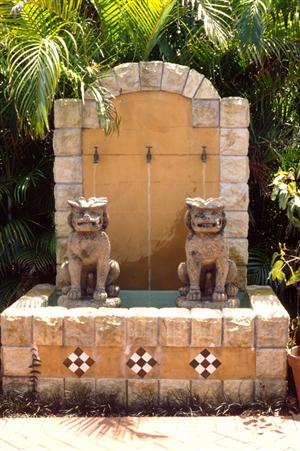
How do you design a water garden?
How do you build a beautiful water garden?
How do you maintain a water garden?
Develop your skills in designing, constructing and maintaining a variety of different types of water gardens.
Learn to Use Water in a Garden Design
Water gardens can be simple or complex, large or small, and in a huge variety of styles. Depending on the theme or style of the garden you might perhaps decide to have straight-edged or geometrical designs for a formal garden, smooth curved designs for a modern garden, or irregular-shaped designs for less formal and natural-style gardens. You might choose to have a single pond or a series of ponds with water cascading from one to another. As you work through this course and look at different styles of water gardens, you will find there are many possibilities, any of which will enhance your garden. This is the prime opportunity to start your own business in creating water gardens.